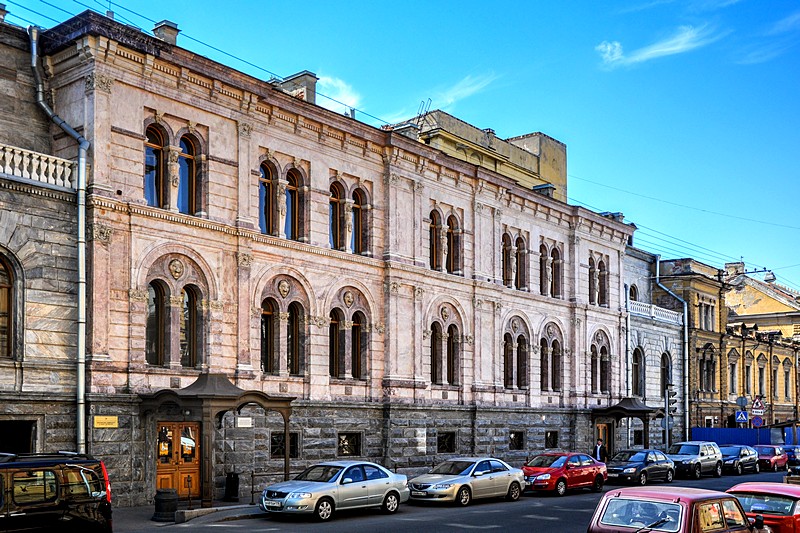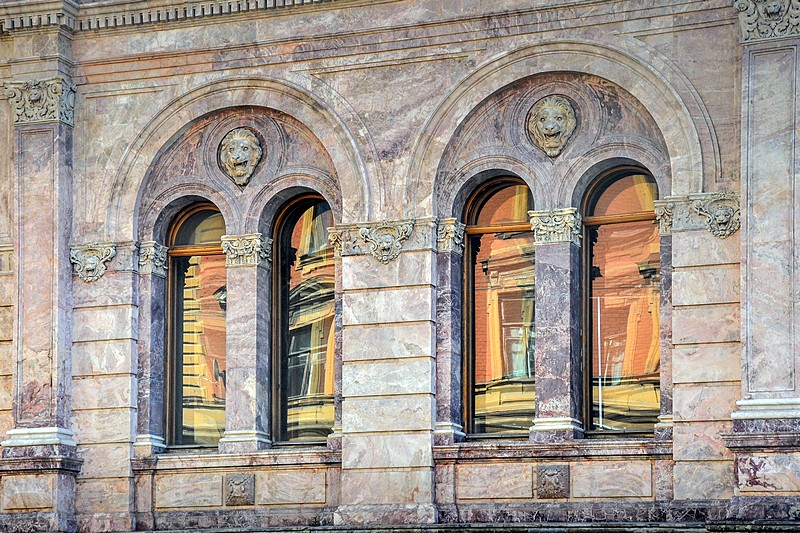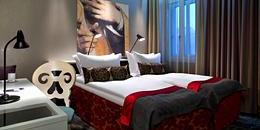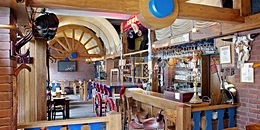Small Marble Palace (Kusheleva-Bezborodko Mansion)

At the end of 18th century, a stone merchant's stone house stood on the site of the palace. In 1830, the house was acquired by Count Alexander Kushelev-Bezborodko, and in 1857-1862, its reconstruction was commissioned by his son, the famous art collector Count Nikolay Kushelev-Bezborodko. Architect Eduard Schmidt created the extraordinary Renaissance Revival facades, which combine the pink marble of the upper two stories with rough gray granite around the ground floor. Inside he designed a new grand entrance hall and two state rooms, a theater, library building, and an orangery. The interiors of the state rooms were richly decorated in Louis XIV and Rococo style. The pink marble was used not only on the facades - inside the palace it was also the favoured material for the grand staircase, fireplace, tiled floors, and walls as well. In his new apartments, the Count hung his large collection of paintings, many of which are now displayed in the Hermitage. A new garden with fountains was also laid out around the mansion.
After the purchase of the building by the imperial family the palace became even more luxurious. Contemporaries who visited there recalled the vast number of decorative vases and bronzes, the porcelain, paintings, carpets, gold, and silk. Grand Duke Nikolay Konstatinovich moved in to the palace in 1873. A competent military officer with a reputation for gambling and womanizing, Nikolay Konstatinovich had only lived in his new palace for one year when he was exiled from St. Petersburg in connection with his affair with the American dancer Fanny Lear. He was accused of stealing diamonds from the casing of an icon hanging in his parents' home - the Marble Palace. Although the Grand Duke denied the charges vehemently and the only evidence was weakly circumstantial, he was declared insane and obliged to leave St. Petersburg for Tashkent.

After the assassination of Alexander II in 1881, the palace was granted to Ekaterina Dolgorukova, the Tsar's widowed morganatic wife. of the recenty was a great lover of women. However, he was soon expelled from Saint Petersburg after being charged with theft. The palace was handed to Princess Catherine Dolgorukaya, widow of Emperor Alexander II. On the second floor, the princess arranged a memorial study in honour of Alexander II. She sold the palace in 1912 when she moved abroad for good.
The new owner turned the building into rented apartments and erected a second apartment building in place of the palace's garden. After 1917, the Small Marble Palace became first a ballet studio and then from 1927 the Industrial Safety Research Institute. It now houses the European University at St. Petersburg. Surviving interiors include four state rooms, the grand staircase, and some design elements of window and door openings. Not so long ago there was a large-scale reconstruction of the unique facade of the palace resulting in the pink marble showing its natural color for the first time in many years. Unfortunately, the management of the European University still prohibits organized tours of the palace.
| Address: | 3, Gagarinskaya Ulitsa |
|---|---|
| Metro: | Chernyshevskaya |
| Directions: | Exit Chernishevskaya Metro Station and turn right on Prospekt Chernyshevskogo to the second turning on the left (Ulitsa Tchaikovskogo). Walk along the street and take the second right onto Gagarinskaya Ulitsa. |
| What's nearby? | Shpalernaya Ulitsa, Naberezhnaya Kutuzova (Kutuzov Embankment), Fontanka River, Neva River, Summer Garden (Letny Sad) |







